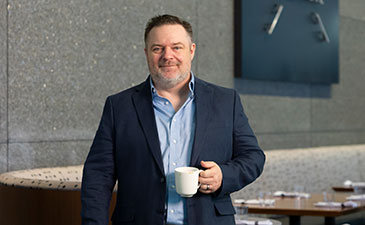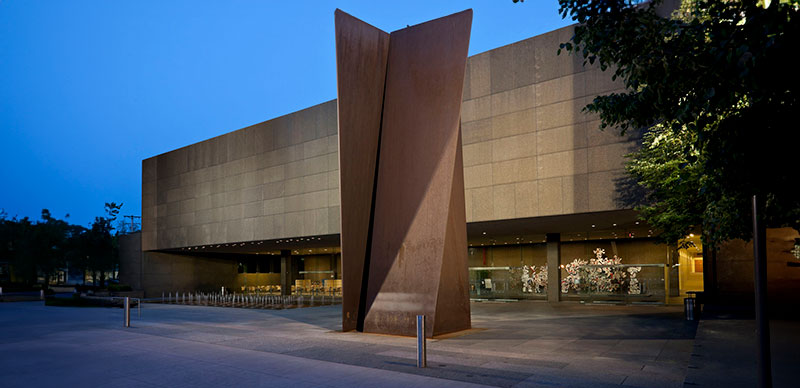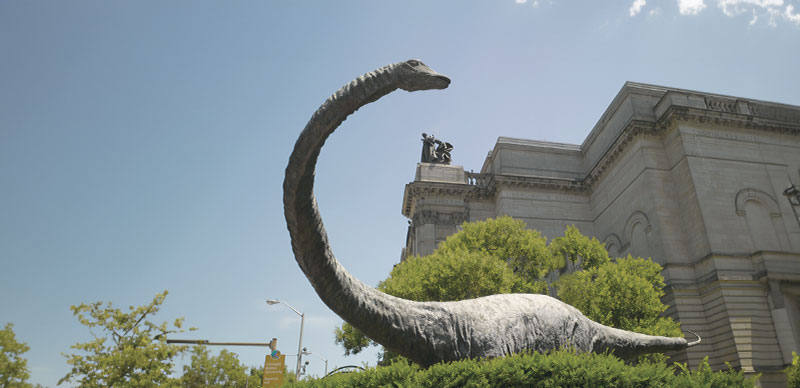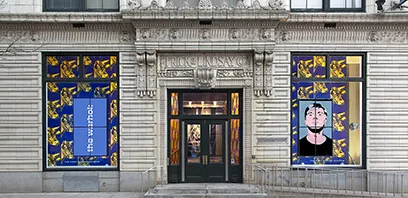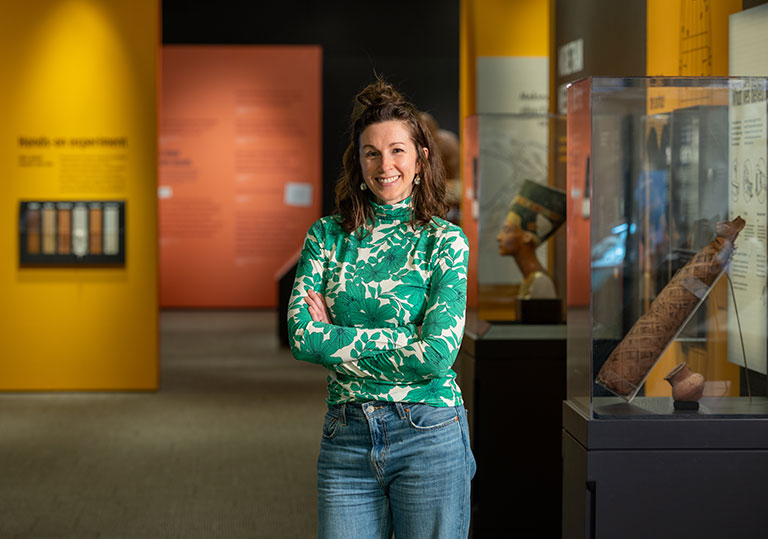 Photo: Joshua Franzos
Photo: Joshua FranzosLisa Haney was in the seventh grade when her fascination with ancient Egypt began. She had a world history teacher who made it come alive through creative assignments, including one in which they mummified Cornish hens from the grocery store. Haney even created a shoebox diorama of Egyptian pharaoh Tutankhamun’s tomb. “One of the main reasons I wanted to work in a museum is to be able to touch all the things that are in the museum,” says Haney. Now, Haney is living her childhood dream as the Egyptologist and curator of Carnegie Museum of Natural History’s upcoming Egypt on the Nile exhibition. Since joining the museum in 2020, Haney has led a multiphase reimagining of the museum’s Egypt gallery that includes conservation of the 4,000-year-old Dahshur boat and ongoing work that visitors can view in the temporary exhibition The Stories We Keep: Conserving Objects From Ancient Egypt. Eventually, the Dahshur boat will become the centerpiece of Egypt on the Nile when it opens, anticipated late next year. A native of Kansas City, Missouri, Haney earned her doctorate in Egyptian art and archaeology at the University of Pennsylvania, and held positions at the Nelson-Atkins Museum of Art, the Metropolitan Museum of Art, and the Brooklyn Museum. She says it’s her calling to share her expertise on ancient Egypt and be a responsible steward of material in the museum’s care. “Science is always changing and evolving,” she says. “The more we learn, the more it changes how we think about and understand ourselves and the past.”
Q: Why is now a good time to update the Egypt gallery?
A: Walton Hall of Ancient Egypt had been open for over 30 years and, in that time, we have learned so much more about ancient Egypt. For example, we discovered that Senwosret III, the owner of the Dahshur boat, had a second funerary complex located in Abydos that we did not even know about when Walton opened. There are so many new discoveries and exciting stories we want to share. This also gives us the opportunity to present ancient Egypt from new perspectives that speak to the inseparable connection between nature and culture, and are more aligned with our commitments and goals as a natural history museum.
Q: Why is it important to continue conservation on the Dahshur boat, and what new revelations has that work yielded?
A: Archaeological wood is very fragile and does not usually survive well. The fact that we have such a large-scale wooden object in our care is something that is really special. We have learned a lot about how past conservation work affected the boat, which helped with planning its current treatment. We also know from past rounds of multiband imaging undertaken in 2017, as well as some of the new photography, that the boat was once fully painted.
Q: The visible lab that allows visitors to chat with working conservators is a unique part of The Stories We Keep. What has the experience been like for the conservators?
A: Every day from 11:30 to noon and 2:00 to 2:30, you can visit the conservation lab and speak directly to a member of the conservation team. They genuinely enjoy being able to share their work, and people always have lots of questions. The ability to have a direct, one-on-one experience like this is really special. It makes people feel like they are a part of what is happening at the museum and showcases the range of different skills conservators need.
Q: How is the planning going for Egypt on the Nile?
A: I’m the content expert for the exhibition and part of a larger team that has been working very diligently to create the best possible experience for our visitors. Right now we are designing the final floor plan and case layouts, looking at graphics, and laying out all the really exciting and engaging interactives that will be part of the exhibition.
Q: Like many other museums, the Museum of Natural History has decided to no longer display human remains, including mummified individuals. What do you want visitors to understand about that change?
A: We are looking to be at the forefront of best practices regarding the stewardship of the individuals in our care. For ancient Egypt, specifically, their tombs, texts, and material culture tell us a lot about what they hoped would happen to them after they died and how they wanted people to engage with them. That has influenced our decision-making and policy creation.
Q: To visitors, ancient Egypt may seem quite distant from Pittsburgh. How can your work create a connection?
A: As a city on the rivers, I think Pittsburgh has a really clear connection to ancient Egypt. River life is part of its cultural identity. We hope to connect with our audiences through that lens to help them see that life in ancient Egypt was rooted in the Nile River and the surrounding landscapes. It’s not that different from our own local culture and life here in Pittsburgh.

